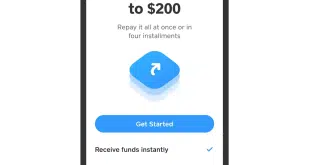The use of smart phones and tablet computers to photograph and deposit checks through online-banking apps surpassed scanner-based remote deposit capture several years ago, but 2014 was a record breaker, according to new findings from research firm Celent, a unit of the Oliver Wyman Group. Some 2,100 banks and credit unions went live with mobile RDC and added more than 23 million new end users, Celent estimates.
“Mobile RDC remains top of mind at financial institutions and vendors alike, and consumed the bulk of industry activity over the past year,” Bob Meara, Celent senior analyst, says in the report. “The result was an explosion of product launches as carefully controlled pilots gave way to general availability.”
The report estimates that about 44 million consumers used mobile capture last year, up from 20 million in 2013. Dubbed the “State of Remote Deposit Capture 2015: Mobile Is the New Scanner,” the report predicts the U.S. will have 62 million mobile RDC users by year’s end and 87 million in 2016.
In contrast, the older, desktop-based variant of RDC had an estimated 2.2 million users in 2014, up slightly from 2.1 million in 2013. Celent predicts 2.3 million users for this year and 2.4 million in 2016.
Boston-based Celent’s findings come from surveys completed by 78 financial institutions in April as well as interviews with executives and managers from 12 of them, plus survey data from 10 RDC vendors.
Several reasons account for mobile RDC’s growth beyond the explosive increase in smart phones and tablets in recent years. Many small banks and credit unions that had offered online banking but not mobile capture are now offering the service in the wake of big-bank pioneers such as USAA and JPMorgan Chase. In 2013, some 1,047 financial institutions offered consumer mobile RDC, a number that grew to 3,147 in 2014. Five years ago, a mere 19 financial institutions offered the service, according to Celent.
Increasing industry experience with risk control is helping to bring more financial institutions into the mobile RDC fold, Meara tells Digital Transactions News. Bankers’ fears about losses, especially so-called duplicates—two or more deposits of the same check—held back mobile RDC for years. Those fears led to extensive eligibility requirements and deposit limitations. “In the early years…virtually nobody was eligible,” says Meara, a long-term observer of the RDC market.
But 63% of Celent’s respondents in 2015 said their RDC losses are less than their established thresholds, compared with 49% in 2013. Thirty-five percent said losses are in line with established thresholds, and only 2% said they’re greater.
Now eligibility restrictions are falling and deposit limits are rising. Only 45% of respondents in the 2015 survey cited tenure with the institution as a criterion for RDC eligibility, down from 79% in 2011. Non-sufficient funds history is a criterion for 49% of respondents, down from 80% four years ago. Some 36% of respondents said they would offer mobile RDC to all customers, up from 6% in 2011.
Banks and credit unions also find that an open-door policy is easier to implement operationally than one based on a slew of individual factors, says Meara. In addition, making the service available to all depositors removes the prospect of unmet expectations if a consumer sees a commercial for the service but then, after applying, is told he’s not eligible.
“Unless you make it eligible to everybody, how can you promote it broadly,” says Meara. “It’s just an invitation to dissatisfaction.”
The reduced hurdles come at a time when more financial institutions are reporting that they’ve actually had a loss by offering RDC. Sixty-seven percent of respondents in 2015 said they had no losses directly attributable to RDC, down from 77% in 2013 (Celent did not do a comparable survey last year), and in the high 80s three to five years ago. But the report says losses have “accelerated modestly” against a backdrop of massive consumer adoption, and recurring losses remain low.
While Celent predicts millions more consumers will become mobile RDC users in the coming few years, financial institutions and vendors also are targeting small businesses for the service. Only 9% of financial-institution respondents offered the service to small businesses in 2012, but 49% do now. Commercial RDC offers more fee potential to banks than does the consumer version, but financial institutions also see mobile RDC as diverting high-cost small-business branch transactions to a less-expensive channel, says Meara.




